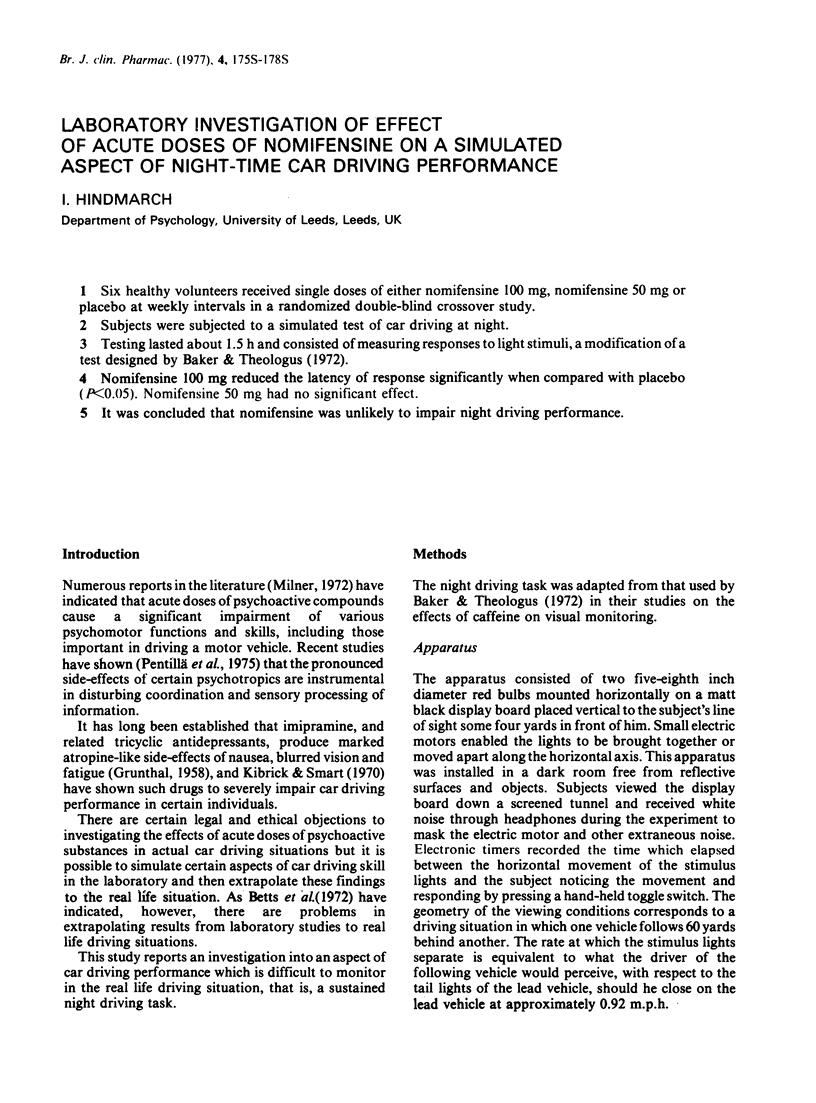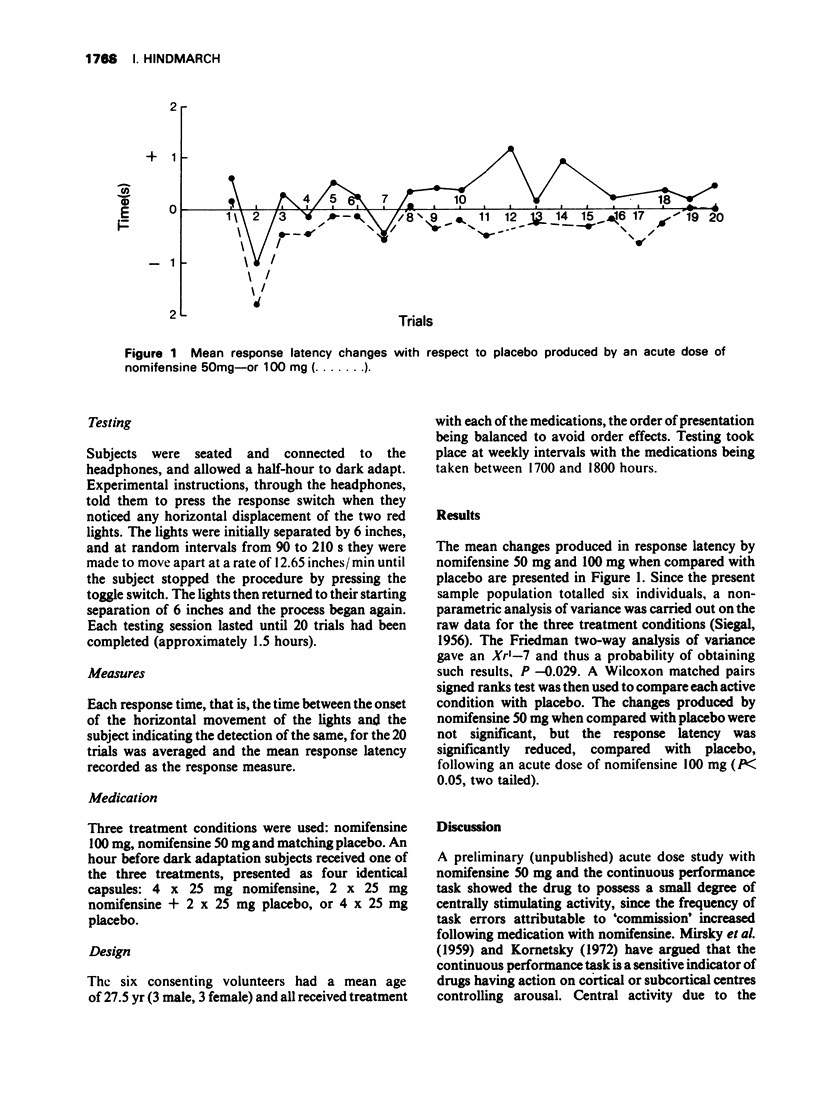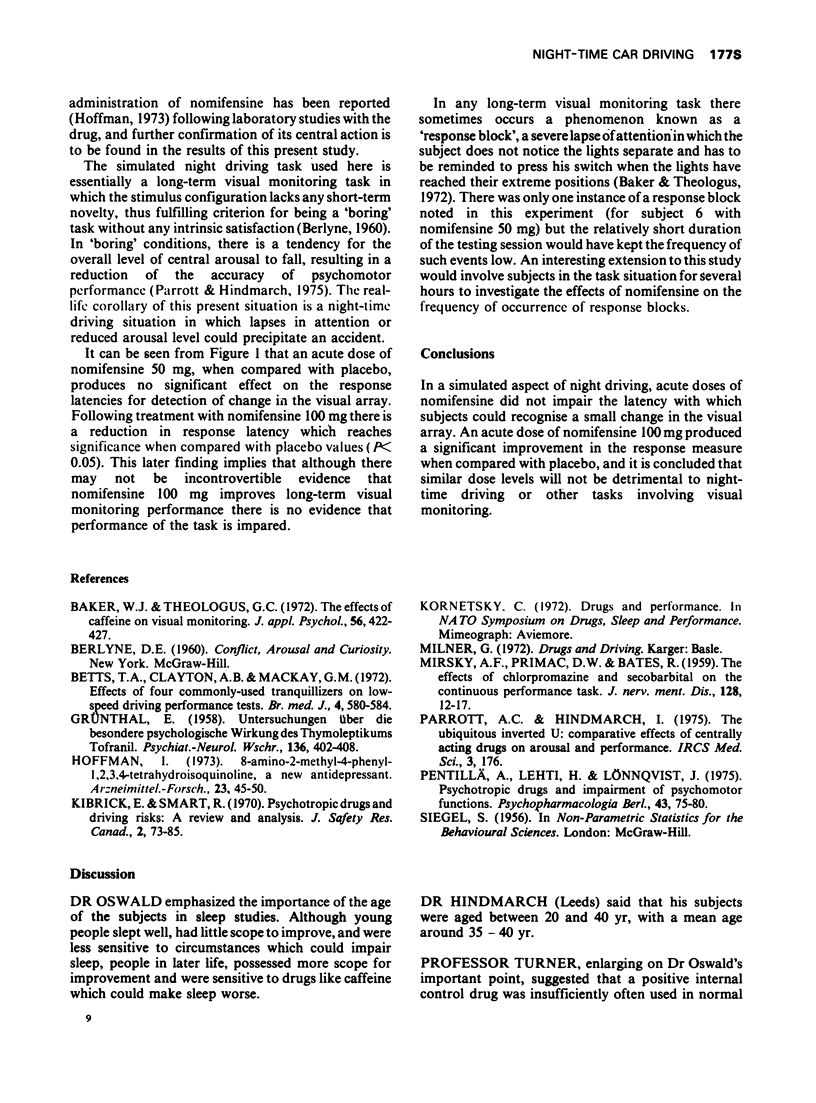Abstract
1 Six healthy volunteers received single doses of either nomifensine 100 mg, nomifensine 50 mg or placebo at weekly intervals in a randomized double-blind crossover study.
2 Subjects were subjected to a simulated test of car driving at night.
3 Testing lasted about 1.5 h and consisted of measuring responses to light stimuli, a modification of a test designed by Baker & Theologus (1972).
4 Nomifensine 100 mg reduced the latency of response significantly when compared with placebo (P<0.05). Nomifensine 50 mg had no significant effect.
5 It was concluded that nomifensine was unlikely to impair night driving performance.
Full text
PDF


Selected References
These references are in PubMed. This may not be the complete list of references from this article.
- Baker W. J., Theologus G. C. Effects of caffeine on visual monitoring. J Appl Psychol. 1972 Oct;56(5):422–427. doi: 10.1037/h0033520. [DOI] [PubMed] [Google Scholar]
- Betts T. A., Clayton A. B., Mackay G. M. Effects of four commonly-used tranquillizers on low-speed driving performance tests. Br Med J. 1972 Dec 9;4(5840):580–584. doi: 10.1136/bmj.4.5840.580. [DOI] [PMC free article] [PubMed] [Google Scholar]
- GRUNTHAL E. Untersuchungen über die besondere psychologische Wirkung des Thymolepticums Tofranil. Psychiatr Neurol (Basel) 1958 Dec;136(6):402–408. [PubMed] [Google Scholar]
- MIRSKY A. F., PRIMAC D. W., BATES R. The effects of chlorpromazine and secobarbital on the C.P.T. J Nerv Ment Dis. 1959 Jan;128(1):12–17. [PubMed] [Google Scholar]
- Penttilä A., Lehti H., Lönnqvist J. Psychotropic drugs and impairment of psychomotor functions. Psychopharmacologia. 1975 Jul 23;43(1):75–80. doi: 10.1007/BF00437618. [DOI] [PubMed] [Google Scholar]


